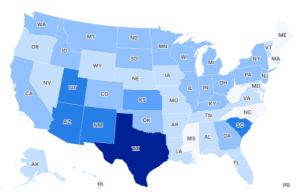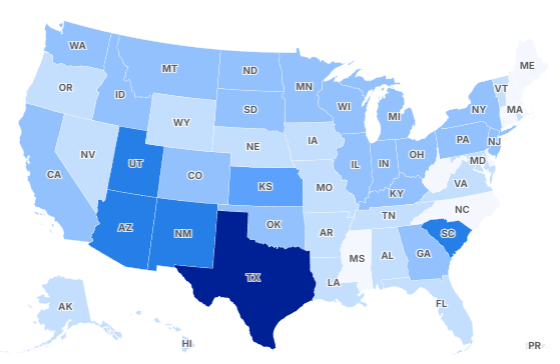A complex cyber espionage case has emerged from a recent U.S. Department of Justice investigation, exposing a sophisticated campaign of digital intrusions into American medical research infrastructure. The case, involving the unauthorized access of COVID-19 research data, is drawing widespread attention from international law enforcement, cybersecurity experts, and diplomatic observers due to the implications it carries for both national security and global public health.
According to federal prosecutors, the operation targeted leading U.S. universities and research institutions deeply involved in pandemic-related studies, including vaccine development, diagnostics, and treatment strategies. The intrusions reportedly exploited vulnerabilities in Microsoft Exchange servers to access private networks, internal communications, and sensitive intellectual property. Investigators allege that the perpetrators sought to extract data of significant strategic value, including proprietary information from virologists and immunologists at institutions across multiple states.
The U.S. government has linked the hacking campaign to a broader effort by a foreign intelligence service, allegedly acting through a network of private contractors. The Department of Justice stated that these contractors operated behind shell companies and were directed by a regional bureau of a foreign ministry of state security, indicating a state-sponsored dimension to the attacks. The targeted intrusion, prosecutors allege, was part of a long-running campaign by a state-backed threat group known in cybersecurity circles as HAFNIUM, or Silk Typhoon.
This group, previously implicated in high-profile attacks on tech companies and government systems, has been accused of using zero-day vulnerabilities to infiltrate networks and exfiltrate confidential data. The tools and techniques used in this case mirror other state-aligned cyber operations aimed at obtaining cutting-edge research and technology to boost domestic capabilities in health, defense, and strategic industries.
A federal grand jury in the Southern District of Texas unsealed a nine-count indictment detailing the alleged crimes. The charges include conspiracy to commit wire fraud, unauthorized access to protected computers, theft of trade secrets, and aggravated identity theft. Prosecutors claim the hacking was not only extensive but also meticulously coordinated, with the defendants maintaining persistent access to several institutional networks for more than a year.
The U.S. government is now seeking to extradite one of the key suspects, a foreign national detained in Europe, where he was apprehended by local authorities at the request of American law enforcement. According to court documents, the individual was arrested at a major international airport and is currently awaiting extradition proceedings. Legal counsel for the suspect has argued that the arrest may have stemmed from mistaken identity, pointing to the suspect’s common surname and alleging that his credentials may have been used without his knowledge.
The suspect, Xu Zewei, is accused of playing a central role in the cyber operation. He allegedly worked under contract for Shanghai Powerock Network Co. Ltd., a private technology firm identified by prosecutors as a front for state-sponsored cyber activity. Xu is believed to have collaborated with another individual, Zhang Yu, who remains at large. Both are accused of compromising email servers and extracting confidential research data for the benefit of a foreign government.
Officials claim the operation was coordinated through China’s Shanghai State Security Bureau (SSSB), a regional branch of the Ministry of State Security (MSS). This link, if proven, adds a diplomatic dimension to the case and highlights growing concerns over cyber-enabled economic espionage, particularly in the biomedical sector. The Department of Justice emphasized that the use of contractors and intermediaries is a deliberate tactic employed to obscure official government involvement in espionage operations.
The implications of the case are significant. With global public health data at stake, the alleged theft raises questions about the integrity of international scientific cooperation, the security of research institutions, and the responsibilities of governments in preventing state-sponsored cybercrime. It also adds to the growing list of incidents where cyber intrusions have been used as tools of geopolitical advantage.
While the extradition process continues, U.S. officials have reiterated their commitment to pursuing justice in cyber espionage cases and holding foreign actors accountable. As the investigation develops, legal experts and policymakers are watching closely to determine how this case may shape future international cybersecurity norms and enforcement strategies.

Emily Johnson is a critically acclaimed essayist and novelist known for her thought-provoking works centered on feminism, women’s rights, and modern relationships. Born and raised in Portland, Oregon, Emily grew up with a deep love of books, often spending her afternoons at her local library. She went on to study literature and gender studies at UCLA, where she became deeply involved in activism and began publishing essays in campus journals. Her debut essay collection, Voices Unbound, struck a chord with readers nationwide for its fearless exploration of gender dynamics, identity, and the challenges faced by women in contemporary society. Emily later transitioned into fiction, writing novels that balance compelling storytelling with social commentary. Her protagonists are often strong, multidimensional women navigating love, ambition, and the struggles of everyday life, making her a favorite among readers who crave authentic, relatable narratives. Critics praise her ability to merge personal intimacy with universal themes. Off the page, Emily is an advocate for women in publishing, leading workshops that encourage young female writers to embrace their voices. She lives in Seattle with her partner and two rescue cats, where she continues to write, teach, and inspire a new generation of storytellers.









